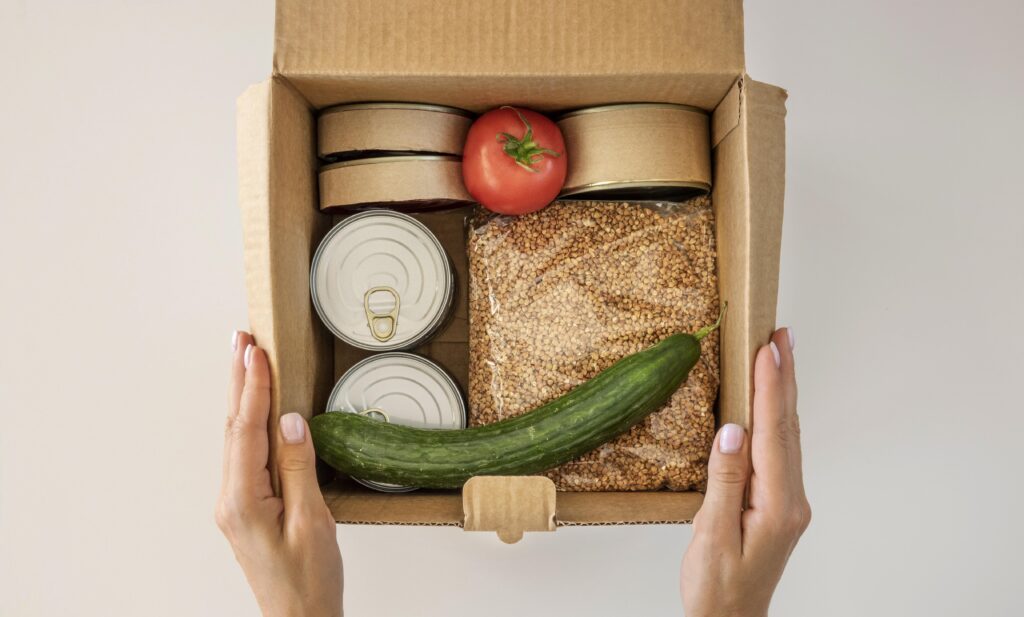
When it comes to shipping food items, maintaining the desired temperature conditions is crucial to ensure freshness and quality. Temperature-controlled packaging has emerged as a reliable solution for preserving perishable goods during transit. By regulating temperature, these packaging materials, including insulated boxes, gel packs, and dry ice, play a vital role in preventing spoilage and maintaining product integrity.
Benefits of Temperature-Controlled Packaging
- Preserving Freshness: Temperature-controlled packaging creates an optimal environment for perishable food items, such as fresh produce, dairy products, and frozen foods. By regulating temperature, it helps slow down the rate of bacterial growth, delay enzymatic reactions, and extend the shelf life of the products.
- Ensuring Food Safety: Maintaining proper temperature conditions during shipping reduces the risk of bacterial contamination and foodborne illnesses. Temperature-controlled packaging minimizes the chances of bacteria multiplying to dangerous levels and helps keep food items within safe temperature ranges.
- Protecting Quality and Texture: Certain food items are sensitive to temperature fluctuations, which can affect their taste, texture, and overall quality. Temperature-controlled packaging mitigates the impact of external temperature changes, preserving the flavor, appearance, and texture of the shipped food items.
Types of Temperature-Controlled Packaging
Insulated Boxes: These boxes are designed with insulating materials to provide a barrier against external temperature variations. Insulated boxes come in various sizes and are suitable for shipping a wide range of food items, including fresh produce, meats, and dairy products.
Gel Packs and Ice Packs: Gel packs and ice packs are commonly used to maintain cold temperatures during shipping. These frozen packs are placed alongside the food items to absorb and dissipate heat, helping to keep them cool and fresh.
Dry Ice: Dry ice, which is solid carbon dioxide, is widely used for shipping frozen or ultra-cold items. It provides extremely low temperatures and sublimates into a gas, eliminating the need for melting ice or gel packs. Proper handling and precautions are necessary when using dry ice.
Where to Purchase Temperature-Controlled Packaging
Temperature-controlled packaging materials can be purchased from various sources, including:
Leading couriers such as FedEx, UPS, and DHL: These companies offer a range of temperature-controlled packaging options.
Packaging Suppliers: Local packaging suppliers often carry a range of temperature-controlled packaging options. They can provide guidance on the best packaging solutions for specific shipping needs.
Online Retailers: E-commerce platforms and specialized online retailers offer a wide selection of temperature-controlled packaging materials. These platforms allow for convenient browsing, comparison, and direct delivery to your doorstep.
Tips for Using Temperature-Controlled Packaging
- Plan and Prepare: Ensure you have the appropriate temperature-controlled packaging materials ready before packing your food items. Consider the expected duration of shipping and select the packaging materials accordingly.
- Proper Placement: Position the temperature-control elements, such as gel packs or dry ice, strategically within the package to maximize their effectiveness. Place them near the food items, ensuring even distribution of cold or frozen temperatures.
- Insulation: Use additional insulation materials, such as bubble wrap or foam inserts, to further enhance the temperature control within the package. This helps minimize temperature fluctuations during transit.
- Monitor and Track: Consider using temperature monitoring devices or data loggers to track and record the temperature conditions inside the packaging. This allows you to verify if the desired temperature ranges were maintained during shipping.
- Follow Safety Guidelines: When using dry ice or other temperature-control materials, follow safety guidelines provided by the packaging manufacturer and adhere to any applicable regulations. This includes wearing protective gloves when handling dry ice and ensuring proper ventilation in the packaging area.
- Timely Shipping: Schedule the shipment of temperature-sensitive food items strategically to minimize the time spent in transit. Choose expedited shipping options when necessary, especially for highly perishable goods.
- Clear Labeling: Clearly label the package as “Temperature-Sensitive” or “Perishable” to alert handlers and couriers about the special handling requirements. This helps ensure that the package receives appropriate attention and is handled with care throughout the shipping process.
Temperature-controlled packaging plays a vital role in maintaining the freshness, quality, and safety of food items during shipping. By regulating temperature conditions, these packaging materials prevent spoilage, extend shelf life, and protect the integrity of perishable goods. Insulated boxes, gel packs, and dry ice are key components of temperature-controlled packaging solutions. They can be purchased from packaging suppliers and online retailers. When using temperature-controlled packaging, proper planning, placement, insulation, and monitoring are essential. Follow safety guidelines and label packages accordingly to ensure the best possible outcomes during shipping. With temperature-controlled packaging, you can confidently ship food items, knowing that their freshness and quality will be preserved until they reach their destination.
Image by Freepik
